
Home
World Endurance Forum
Paris, March 31, 2007
Forum Document Downloads
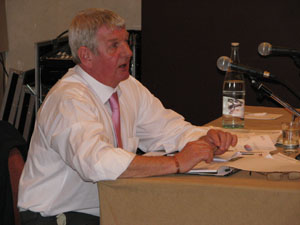 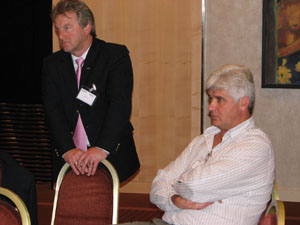 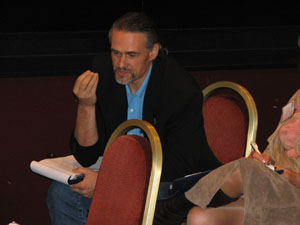 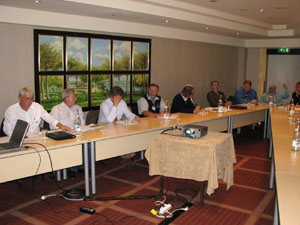      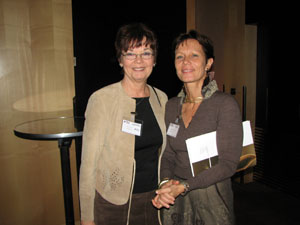  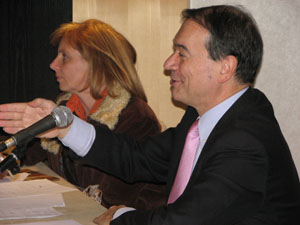 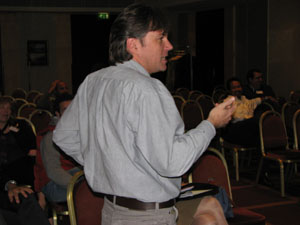 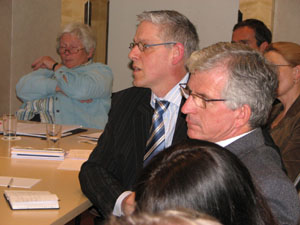 |
Day 1 : Kevin MyersOpening Remarks : Ian Williams, Director of Endurance, FEIEndurance is the second most important discipline within FEI : and also its fastest growing. There are 74 competing federations running endurance competitions It can no longer exist in the background for the few and for the specialists: media and public scrutinize the sport at a growing rate, and the sport is obliged to evolve accordingly.The FEI leadership will look at the report from this conference with the utmost interest. Popularity of endurance should not be confused with the speed of its growth. Can the industry sustain itself, and if not, how can it be changed to do so? The welfare of the horse has plagued the industry for years and the evolution of the sport must better reflect the perspective of the judges, vets and technical delegates. The goal of the conference is to define a unified voice. The theme of the conference is consolidation, cooperation and creation. In May 07, a task force will be appointed, made up of people nominated by their federations. The number and scope of the committee remains to be determined. A report will be produced in October and then in March 08, a final report will be created and distributed to the international delegation. A full review will take place in 09. Updates of the progress will be made available on the website throughout the process. Ian's presentation may be found Here. Five groups made presentations of their findings before the breakout sessions. Group 1: Continental Europe - Susan DollingerSusan presented an impressive number of statistics on addressing growth in the sport and data related to the causes of metabolic and lameness issues. The presentation may be found Here.Group 1 is concerned by the lack of an appropriate qualification system, which is cited as a reason for disturbingly low completion rates at world championships. The number of nations participating has been steadily increasing while completion rate has been steadily decreasing. The group proposed certain modifications to the regulations that would address qualification procedures; length of loops; time allotment for presenting the horse once pulsed down and number of vet checks. The proposal included no separation of horse and rider in the qualification process and a withdrawal of certain riders based on an allotment of pulls. It also suggests the 160 KM (100 mile) distance should remain unchanged. Perhaps the most surprising for me was the notion of closing the race within one hour of the first horse crossing the finish line (the so-called Formula One finish). Group 4: Canada and the US - Art PrieszArtís presentation asked the group to consider increasing the technical challenge of the trail whereby the event would become less about speed and more about horse and rider working together to overcome challenges they face together. He proposed either making the trails longer or making them more challengingThe group agrees that the championship distance should stay at 160 km : it seems to increase safety of horses, since the shorter rides have a higher occurrence of pulls. He prompted the group to think carefully about how horses and riders qualify. He suggests that a new system might put more of the burden on national federations to be better qualified, hence compacting the finish of the field. The presentation may be found Here. Group 2: England (?)Endurance requires a new system of evaluation because of poor press. One solution would be for horses to qualify from gate to gate : or loop to loop. Only the best horses qualify for the last loop. Rather than focusing on the number of eliminations, the focus is on the number of horses who have qualified. She compared it to other equine disciplines. This evaluation system would help sport focus on best horses finishing.Group 2 does not want the 160km ride championship distance to change : perhaps only dropping the distance to 140 km in cases of extreme technical conditions. They propose stiffer qualification of horse/rider combos. The Presetation may be found Here. Group 7: Middle-EastThere are 17 countries in Group 7. Since 93, 170 competitions have taken place including 2 WECs and eight Presidentís Cups. There are three dedicated endurance centers, with a fourth opening recently. The region has computerized timing systems that work very well.In Bahrain, endurance began in 01. There are many rides, including the Kingís Cup. There have been 75 rides in total since 01. Qatar has had several rides. Jordan endurance goes back a long way : it is the home of the famous Wadi Rum. Kuwait, Saudi & Oman, Lebanon, Egypt, Algeria and Tunisia are also member countries of Group 7. There exists good communication amongst most of member countries. The group suggests that FEI could help by holding courses for delegates where they are most needed. Course directors should be taken from the field, and must have a long and successful record of doing a good job on the field. FEI can also encourage sport by putting on an annual race for members countries. The group proposes a Formula One finish that would lead to an early termination of the ride. The presentation may be found Here. Group 8: Australia, NZ, Malaysia, Korea, JapanAustralia: 2,500 members; 120 training rides/year; 120 80km rides/year; 15 championship rides of which 5 or 6 are FEI. The National Championship ride is The Quilty: boasting a 57% completion rate from 307 participants. The winner this year completed in 9h15.New Zealand: nearly all rides function under FEI; very strong internationally. NZ won gold in Dubai in 98. All rides function under FEI rules. Malaysia: the 2008 WEC will be very hot and a great test of skills. Japan: First FEI 160km ride in June 07. The country has been competing internationally for more than ten years. Overall, the sport has enjoyed growth, increased financial value of horses; professional training stables and trainers; higher standards of nutrition. There are faster events with more prizes and prestige. With the foregoing comes the need for specialized treatment vets. Faster speeds also bring lower completion rates. There is a high consumption rate of horses going overseas to satisfy sport internationally. The group wants to keep 160km ride distance, and for the rides to be held in weather conditions and trail conditions that ensure welfare of horse. Team competitions must stay an integral element of sport. The qualification process should be reviewed : all nations must qualify on a fair and equitable basis. It proposes rating courses according to level of technical difficulty and weather conditions and to set standards and give appropriate training for track designers. Training for officials should be ongoing and monitored by national federations. They have an early warning system that brings riders before a committee once a rider has three consecutive pulls. Final vet exams at finish line need to be streamlined. The two-hour invasive treatment rule is too hard to police without an examination. A compulsory examination after two hours was resisted initially, then embraced by all. The CRI has different interpretations in different countries and should be re-examined. The standard of performance of officials varies enormously from country to country and the rules are interpreted differently between countries. Horse welfare: faster speeds; lower completion rates; higher invasive treatment rates. Completion rates are down, speeds are up. Published results do not always tell an accurate story of the ride. Ratio of lameness to metabolic pulls are a good indicator: 7 to 1 in Australia. Treatment vets should examine all eliminations and report findings and reestablish the Vet advisory committee. Here. fGroup IX: South Africa, Namibia and Botswana2,400 endurance riders; 13 FEI registered rides and 100 others under national rules. Riders travel up to 2,000 km to get to rides. Meanwhile, membership has grown by 20% per year.The group proposes the development of a system to equalize endurance horses based on the difficulty of course. They have developed a complex set of rating criteria that rates the performance of speed of horses that they suggest enables a closer comparison of horses between countries and regions, calculating a so-called "corrected" speed of the horses. Please see the presentation for more detail. The presentation may be found Here. Close of Morning Session: Sven Holmberg, Forum Chairman and FEI First VPSven summarized that conditions obviously vary from one side to the other of the world. This is not a unique situation for a sport: marathon running and cross-country skiing are not unlike endurance in terms of variety of terrain and conditions. He acknowledged that there are a number of recurring core values from each of the groups: welfare of horses; fairness and equality of rule application. Sven's comments may be found Here. |




